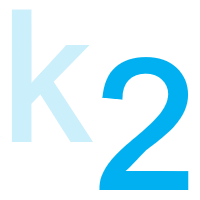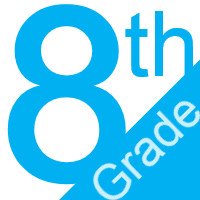8th Grade English
 Standards Glossaries
Standards Glossaries
| K Grade English | 1st Grade English | 2nd Grade English |
 Standards Glossaries
Standards Glossaries
| 3rd Grade English | 4th Grade English | 5th Grade English |
 Standards Glossaries
Standards Glossaries
| 6th Grade English | 7th Grade English | 8th Grade English |
 Standards Glossaries
Standards Glossaries
| 9th Grade English | 10th Grade English | 11th Grade English | 12th Grade English |
 Standards Glossaries
Standards Glossaries
| HS Journalism | HS Speech |
| All categories |
PRIORITIZED STANDARDS |
|---|
ELA-08.SL
Narrative for (SL) Speaking and ListeningAn important focus of the speaking and listening standards is academic discussion in one-on-one, small-group, and whole-class settings. Formal presentations are one important way such communication occurs, but so is the more informal discussion that takes place as students collaborate to ask and answer questions, build understanding, and solve problems. These standards require that students gain, evaluate and present information, ideas, and evidence through listening and speaking as well as through incorporating media. Regardless of the speaking and listening setting, students are expected to use appropriate eye contact, adequate volume, and clear pronunciation. The standards within this speaking and listening strand are closely linked with the other strands of reading, writing, and language as they discuss literature and informational texts and as they work through the writing process. Calculation Method for StrandsStrands are larger groups of related standards. The Strand Grade is a calculation of all the related standards. Click on the standard name below each strand to access the learning targets and proficiency scales for each strand's related standards. | |
ELA-08.SL.01
Student Learning Targets for Grade 8 ELA:Knowledge Targets
Reasoning Targets
Skills (Performance) Targets
Product Targets
Student Learning Targets for Grade 8 Reading Pro:Skills (Performance) Targets
Proficiency Scale for Grade 8 ELA:
Proficiency Scale for Grade 8 Reading Pro:
ResourcesWebsites
Vocabulary
| ||||||||||||||||||||||||||||||||||||||||||||||||||||||||||||||||||||||||||||
ELA-08.SL.04
Student Learning Targets for Grade 8 ELA:Knowledge Targets
Reasoning Targets
Skills (Performance) Targets
| ||||||||||||||||||||||||||||||||||||||||||||||||||||||||||||||||||||||||||||
| Score | 8.SL.04 Present claims and findings, emphasizing salient points in a focused, coherent manner with relevant evidence, sound valid reasoning, and well-chosen details; use appropriate eye contact, adequate volume, and clear pronunciation. | Sample Activity |
|
| 4.0 |
In addition to Score 3.0, the student demonstrates in-depth inferences and applications regarding more complex material that go beyond end of instruction expectations.
|
- | |
| 3.5 | In addition to Score 3.0 performance, the student demonstrates in-depth inferences and applications regarding the more complex content with partial success. | ||
| 3.0 |
“The Standard.” The student demonstrates no major errors or omissions regarding any of the information and processes that were end of instruction expectations. The student:
|
- | |
| 2.5 | The student demonstrates no major errors or omissions regarding the simpler details and processes (Score 2.0 content) and partial knowledge of the more complex ideas and processes (Score 3.0 content). | ||
| 2.0 |
The student demonstrates no major errors or omissions regarding the simpler details and processes but exhibits major errors or omissions regarding the more complex ideas and processes (Score 3.0 content). The student:
|
- | |
| 1.5 | The student demonstrates partial knowledge of the simpler details and processes (Score 2.0 content) but exhibits major errors or omissions regarding the more complex ideas and procedures (Score 3.0 content). | ||
| 1.0 | With help, the student demonstrates a partial understanding of some of the simpler details and processes (Score 2.0 content) and some of the more complex ideas and processes (Score 3.0 content). | - | |
| 0.5 | With help, the student demonstrates a partial understanding of some of the simpler details and processes (Score 2.0 content) but not the more complex ideas and processes (Score 3.0 content). | ||
Student Learning Targets for Grade 8 Communications:
Reasoning Targets
- I can determine salient points of my findings.
Skills (Performance) Targets
- I can speak conversationally when I present because I have planned and practice.
- I can provide relevant evidence to support a claim.
- I can use eye contact, appropriate volume, and clear pronunciation during a presentation.
Product Targets
- I can present claims logically.
Proficiency Scale for Grade 8 Communications:
Click HERE to view proficiency scale.
Student Learning Targets for Grade 8 Reading Pro:
Skills (Performance) Targets
-
I can produce an effective introduction (attention getter, context/transitions, claim) and presents strong conclusion.
-
I can maintain eye contact.
-
I can speak clearly, loudly, and at an appropriate rate.
-
I can maintain poise and confidence.
- I can use transitions to move from one idea to the next.
Proficiency Scale for Grade 8 Reading Pro:
| Score | Description | Sample Activity |
|
| 4.0 | In addition to Score 3.0, the student demonstrates in-depth inferences and applications regarding more complex material that go beyond end of instruction expectations. | - | |
| 3.5 | In addition to Score 3.0 performance, the student demonstrates in-depth inferences and applications regarding the more complex content with partial success. | ||
| 3.0 | “The Standard.” The student demonstrates no major errors or omissions regarding any of the information and processes that were end of instruction expectations.The student:
|
- | |
| 2.5 | The student demonstrates no major errors or omissions regarding the simpler details and processes (Score 2.0 content) and partial knowledge of the more complex ideas and processes (Score 3.0 content). | ||
| 2.0 |
There are no major errors or omissions regarding the simpler details and processes as the student:
However, the student exhibits major errors or omissions regarding the more complex ideas and processes. |
- | |
| 1.5 | The student demonstrates partial knowledge of the simpler details and processes (Score 2.0 content) but exhibits major errors or omissions regarding the more complex ideas and procedures (Score 3.0 content). | ||
| 1.0 | With help, the student demonstrates a partial understanding of some of the simpler details and processes (Score 2.0 content) and some of the more complex ideas and processes (Score 3.0 content). | - | |
| 0.5 | With help, the student demonstrates a partial understanding of some of the simpler details and processes (Score 2.0 content) but not the more complex ideas and processes (Score 3.0 content). | ||
ELA-08.SL.05
Student Learning Targets for 8th Communications:Skills (Performance) Targets
| ||||
ELA-08.SL.06
Student Learning Targets for 8th Grade ELA:Knowledge Targets
Reasoning Targets
Skills (Performance) Targets
Product Targets
Proficiency Scale
ResourcesWebsites Vocabulary | ||||||||||||||||||||||||||||||||||||||||
ELA-08.W
Narrative for (W) WritingStudents in grade 8 are increasingly challenged to sharpen their ability to write and speak with more clarity and coherence, providing clear reasons and relevant evidence to support their conclusions. While the writing standards specify that students will focus on narrative, explanatory, and argumentative writing, 8th grade students will also discover how to answer self-generated questions through writing and research. In all of these writing opportunities, students aim toward organizing and developing their ideas with specific evidence and writing in such a way that transitions, word choice, and sentence structure all contribute to readability and meaning. Throughout the writing process, students will also learn how to prewrite, revise and edit to make their writing stronger. These writing standards are strongly linked to a student’s understanding of literature and informational text as well as to their language standards. Calculation Method for StrandsStrands are larger groups of related standards. The Strand Grade is a calculation of all the related standards. Click on the standard name below each strand to access the learning targets and proficiency scales for each strand's related standards. | |
ELA-08.W.04
Student Learning Targets for Grade 8 ELA:Knowledge Targets
Reasoning Targets
Skills (Performance) Targets
Product Targets
Student Learning Targets for Grade 8 Reading Pro:Reasoning Targets
Skills (Performance) Targets
Product Targets
Rubric for Grade 8 ELA:Click here -> Narrative writing Rubric Click here -> Argumentative writing Rubric Click here -> Informative writing Rubric Resources for GradeWebsites Vocabulary Proficiency Scale for Grade 8 Reading Pro:
ResourcesWebsites
Vocabulary
| ||||||||||||||||||||||||||||||||||||||||
ELA-08.W.07
Student Learning Targets for 8th ELA:Knowledge Targets
Reasoning Targets
Skills (Performance) Targets
Product Targets
Proficiency Scale for ELA 8:
ResourcesWebsites Vocabulary Student Learning Targets for 8th Communications:Knowledge Targets
Reasoning Targets
Skills (Performance) Targets
Proficiency Scale for ELA 8:Click HERE to view the proficiency scale. | ||||||||||||||||||||||||||||||||||||||||
ELA-08.W.08
Student Learning Targets for 8th ELA:Knowledge Targets
Reasoning Targets
Skills (Performance) Targets
Product Targets
Proficiency Scale for 8th ELA
ResourcesWebsites Vocabulary Student Learning Targets for 8th Communications:Knowledge Targets
Skills (Performance) Targets
Product Targets
Proficiency Scale for 8th Communications:Click HERE to view proficiency scale. | ||||||||||||||||||||||||||||||||||||||||||||


 Strand (SL)
Strand (SL) Strand (W)
Strand (W)